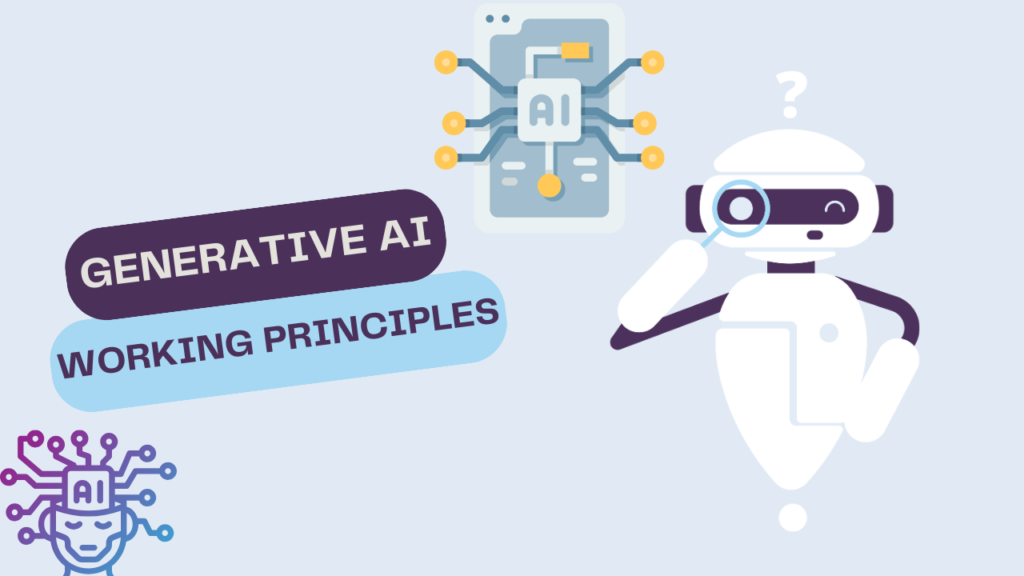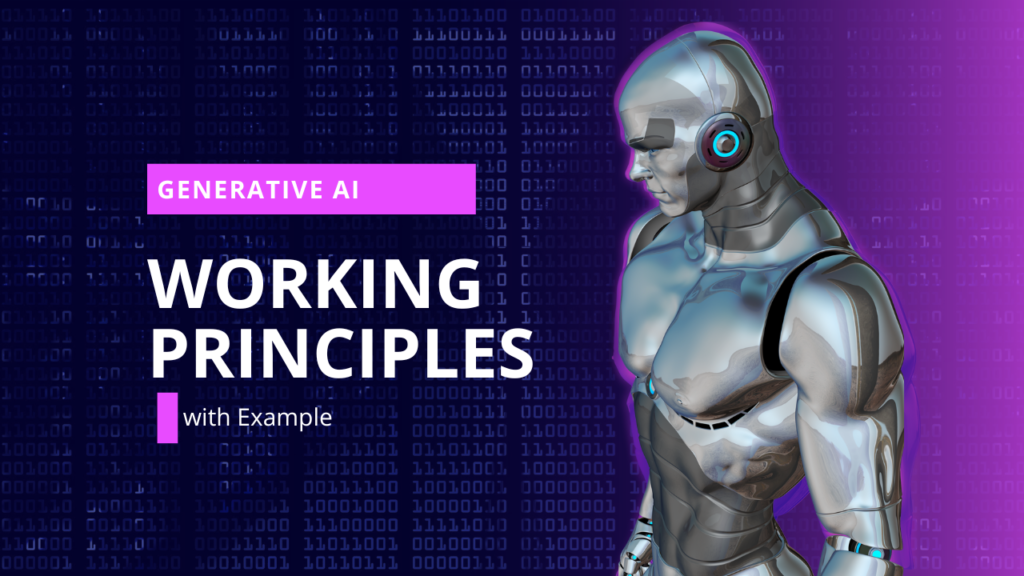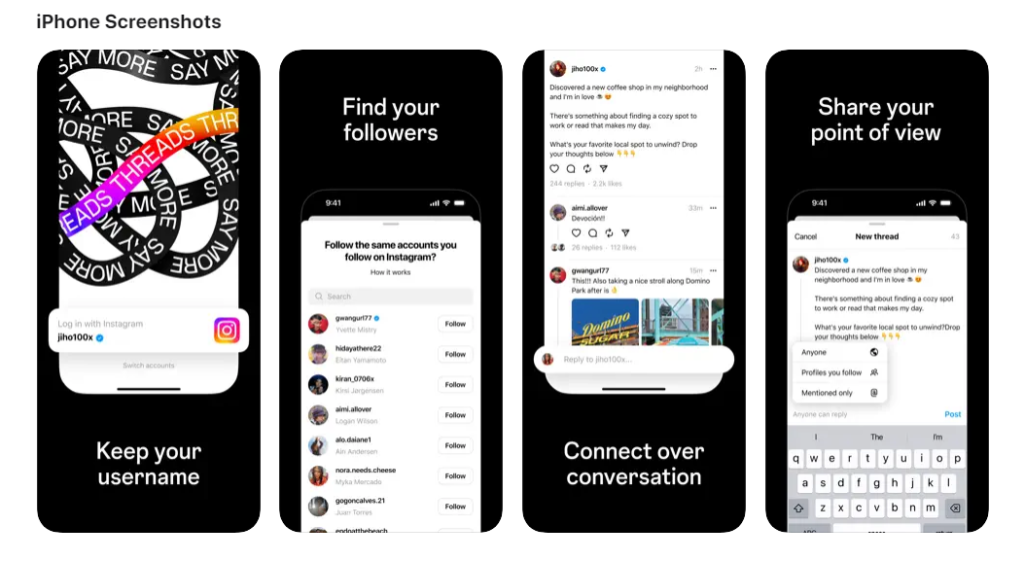
What is Generative AI – Working Principles and Impact

AI refers to the simulation of human intelligence in machines that are programmed to think and learn like humans. These intelligent systems can analyze data, recognize patterns, make decisions, and adapt to changing circumstances. The overarching objective is to create machines that exhibit traits commonly associated with human intelligence, including problem-solving, language understanding, perception, and even creativity.
Introduction of Generative AI
Generative AI refers to a class of artificial intelligence algorithms, that involves the creation of new and original content, such as images, music, or text, by learning patterns and structures from existing data. By utilizing techniques like deep learning and neural networks, generative AI models can generate realistic and coherent outputs that mimic human creativity. Unlike traditional AI systems that rely on explicit programming and rule-based decision-making, generative models are trained on vast datasets and can autonomously produce outputs that resemble the training data. Generative AI depent a lot on trained data.
Working Principles of Generative AI

Generative AI, like ChatGPT, works by learning patterns from a large amount of text data and then using that knowledge to generate new text. It’s like having a really smart assistant that has read tons of books and conversations and can now create its own sentences based on what it learned. Let’s break down how it works with a simple example of text generation:
1. Reading and Learning: Imagine ChatGPT as a diligent reader. It has read a vast library of text, including books, articles, and conversations. It learns grammar, sentence structures, and the meanings of words by seeing how they are used in different contexts.
2. Understanding Context: Suppose you start a conversation with ChatGPT by saying, “Tell me about your day.” The model analyzes the context of your question, just like a person would, and understands that you’re asking about its experiences.
3. Recalling Information: Based on its extensive reading, ChatGPT recalls information related to your question. It might remember details about its “virtual day” or generate a response that fits the context, considering phrases and information it learned during training.
4. Crafting a Response: ChatGPT then constructs a response, stringing together words and phrases it has learned to be coherent and contextually appropriate. It aims to generate a response that makes sense and is relevant to your prompt.
5. Continuous Learning: What’s fascinating is that ChatGPT can also learn from your input. If you ask a follow-up question or clarify your initial query, ChatGPT adapts its responses based on the ongoing conversation, continuously refining its understanding and generating more contextually relevant text.
Example Conversation:
- You: “Tell me about your day.”
- ChatGPT: “Oh, my virtual day is always busy, sorting through information and assisting users. How can I help you today?”
- You: “What’s your favorite thing about helping users?”
- ChatGPT: “I don’t have personal preferences, but I find it fulfilling to assist and provide information. It’s like having a never-ending conversation with the world.”
In this example, ChatGPT generates responses by drawing on its vast knowledge of language and context. It doesn’t have personal experiences or feelings, but it uses its training data to create coherent and contextually appropriate text based on the input it receives. This process of understanding, recalling, and generating responses is what makes ChatGPT an impressive example of generative AI in action.
impact of Generative AI
The utilization of Generative AI spans across various domains and industries, showcasing its versatility and potential. In the field of art and creativity, Generative AI has been employed to generate unique and innovative designs, paintings, and music compositions. It has also found applications in the gaming industry, where it can generate realistic and immersive virtual environments. Additionally, it has been employed in natural language processing tasks, such as language translation and text generation, revolutionizing the way we communicate and interact with technology. The applications of Generative AI are vast and continue to expand, promising advancements in numerous fi




No comments yet.